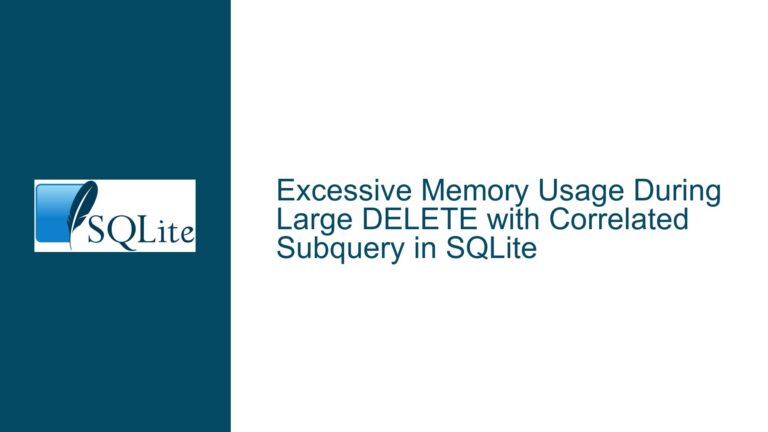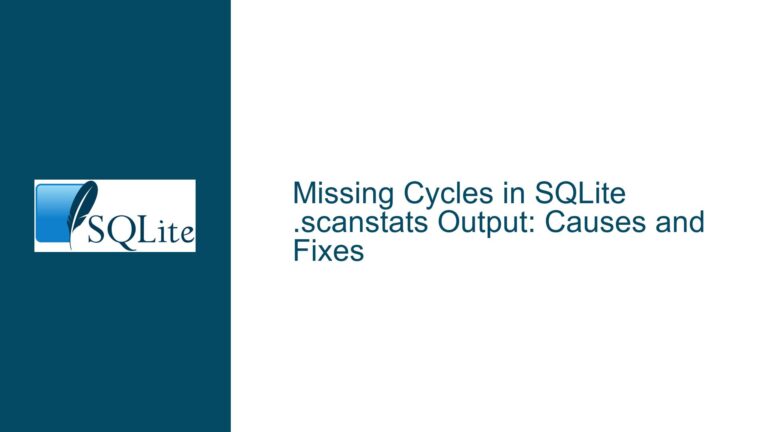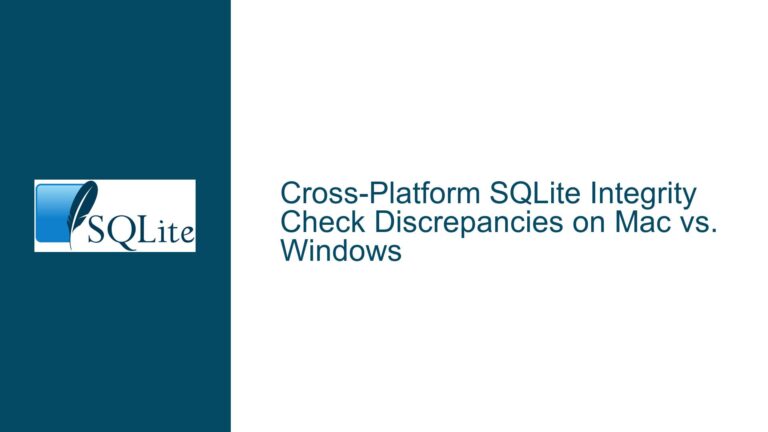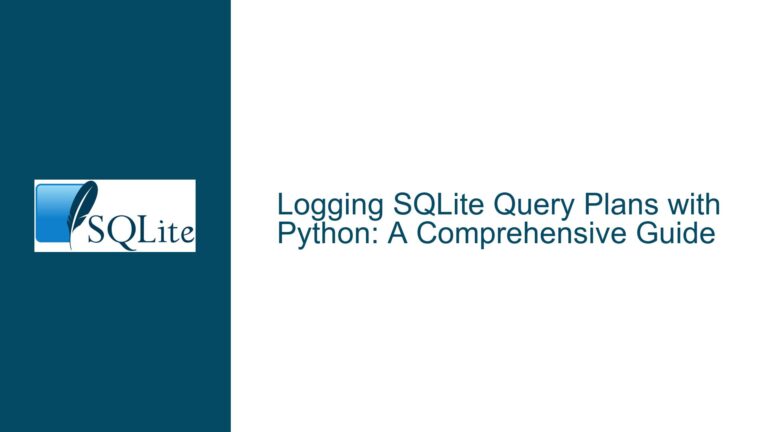Minimizing SQLite Page Touches for Networked Storage and SSD Longevity
Understanding SQLite’s Page Modification Dynamics in B-Tree and Storage Optimization
B-Tree Page Propagation Mechanics and Commit Overhead
SQLite’s B-tree implementation governs how data modifications propagate through the database structure. Each write operation (INSERT/UPDATE/DELETE) triggers a cascade of page modifications due to B-tree balancing requirements. For example:
- Leaf Node Modifications: Direct data changes occur in leaf nodes. If a leaf exceeds its capacity (typically 4KB default page size), it splits into two nodes. This split propagates upward to parent nodes, requiring updates to internal B-tree pages.
- Index Maintenance: Secondary indexes duplicate key-value pairs, meaning a single row update may modify multiple index leaf nodes. Each index operates as a separate B-tree, multiplying page touch counts.
- Freelist Management: Deleted pages are added to a freelist. Auto-vacuum mode attempts to repurpose these pages, but incremental vacuuming may leave partial freelists requiring periodic reorganization.
The Write-Ahead Log (WAL) complicates this further. While WAL reduces lock contention by deferring page writes to checkpoint operations, checkpoints themselves require bulk writes of all modified pages since the last checkpoint. For networked storage systems where pages are fetched via Merkle hash verification, frequent checkpoints increase data transfer demands.
Root Causes of Excessive Page Touches in SQLite
B-Tree Structural Overhead
- Page Splits: Sequential inserts in indexed tables cause rightmost leaf splits (low overhead), but random inserts trigger mid-tree splits requiring parent node updates.
- Fill Factor: Default 100% page fill efficiency leads to immediate splits on inserts. Reducing fill factor via
PRAGMA auto_vacuum = INCREMENTALleaves space but increases storage footprint.
Index-Induced Write Amplification
- Each secondary index adds O(log N) page writes per row modification. A table with three indexes may quadruple page touches versus a heap table.
Vacuuming and Freelist Fragmentation
PRAGMA auto_vacuum = FULLreorganizes the database file after deletions but requires rewriting the entire B-tree. Incremental vacuum (PRAGMA incremental_vacuum(N)) reclaims freelist pages in chunks, causing intermittent page touch spikes.
Page Size and Block Alignment Mismatch
- SQLite’s page size (default 4KB) may not align with SSD block sizes (16KB-256KB). A 4KB page modification forces the SSD to read-modify-write a larger block, amplifying wear.
Transaction Commit Granularity
- Small, frequent transactions prevent WAL checkpoint consolidation. A transaction committing every 10 rows incurs 10x more page writes than a single 100-row batch.
Strategic Page Touch Reduction Techniques and Workarounds
B-Tree Optimization via Schema Design
- Clustered Index Alignment: Declare
INTEGER PRIMARY KEYto cluster rows physically, reducing random leaf splits. Example:CREATE TABLE sensor_data ( id INTEGER PRIMARY KEY, -- Clustered index timestamp DATETIME, value FLOAT ); - Covering Indexes: Eliminate heap accesses by including all queried columns in indexes:
CREATE INDEX idx_covering ON orders (customer_id) INCLUDE (total, status); - Sans-Index Tables: For write-heavy tables with full-table scans, use
WITHOUT ROWIDto store data in a clustered format:CREATE TABLE log_entries ( log_id INTEGER PRIMARY KEY, entry TEXT ) WITHOUT ROWID; -- Stores data in PRIMARY KEY order
Transaction and WAL Tuning
- Batch Commit Sizing: Empirical testing shows 1,000-10,000 rows per transaction optimize WAL checkpoint efficiency. Monitor via:
PRAGMA wal_checkpoint(TRUNCATE); -- Force checkpoint to measure WAL size - Checkpoint Throttling: Use
PRAGMA wal_autocheckpoint = 1000;to delay checkpoints until WAL reaches 1000 pages. Combine withsqlite3_wal_hook()for custom checkpoint triggers.
Storage Layer Configuration
- Page Size Alignment: Match SQLite page size to SSD block size (e.g., 16KB):
sqlite3 db.db "PRAGMA page_size = 16384; VACUUM;" - Secure Delete Bypass: Disable zeroing of deleted data to prevent redundant writes:
PRAGMA secure_delete = OFF; -- Trade security for write reduction
Alternative Storage Engines and Experimental Approaches
- HCTree Hybrid Layout: While not native to SQLite, experimental forks using log-structured merge (LSM) trees or fractal trees (HCTree) batch updates in append-only layers. Requires custom SQLite compilation with
-DSQLITE_ENABLE_HCTREE. - RB-Tree Overlay: For Merkle-based networked storage, implement a red-black tree in a virtual table module. Page hashes are stored in an RB structure, allowing O(1) hash verification with minimal page locks.
Networked Storage-Specific Tactics
- Page Delta Encoding: Store XOR deltas between page versions instead of full pages. Use SQLite’s
sqlite3_blobAPI to access raw page content for delta computation. - Merkle Tree Sharding: Divide the database into shards with independent Merkle roots. A
PRAGMA shard_size = 1048576;(1MB) limits page transfers to modified shards.
Monitoring and Validation
- Page Touch Profiling: Use
sqlite3_analyzerto generate page modification heatmaps:sqlite3_analyzer db.db > analysis.txt grep -A 10 'Page changes per table' analysis.txt - SSD Wear Estimation: Correlate SQLite page writes with SMART attributes (e.g.,
Percent_Lifetime_Remaining) using vendor tools.






